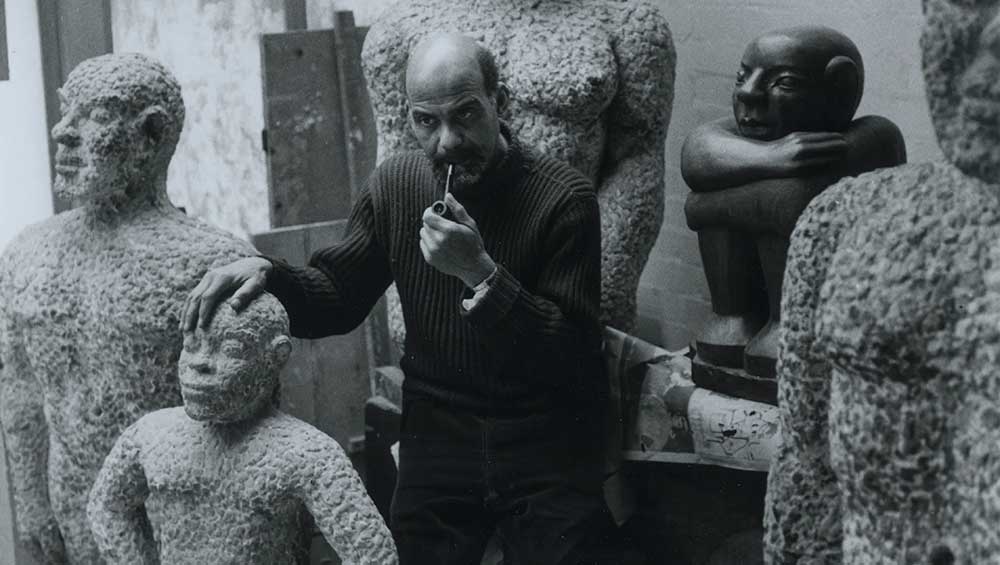
Ronald Moody with Concrete Family, 1963. © Val Wilmer. Photo: Val Wilmer.
The Hepworth Wakefield
22 June – 3 November 2024
by BETH WILLIAMSON
Jamaican-born Ronald Moody (1900-1984) may have begun his working life in London as a dentist in 1930, but just five years later he carved his first wooden sculpture in the greenhouse-cum-studio attached to his garden flat. He was already exhibiting in group exhibitions in 1935, and his work was shown alongside the likes of Jacob Epstein and Eileen Agar. Just two years later, he had his first solo exhibition, at Galerie Billiet-Vorms in Paris, to much critical acclaim. Buoyed by his success, Moody moved to Paris in 1938, and in 1839 another solo exhibition, this time at Kunstzaal van Lier in Amsterdam, bolstered his burgeoning career, swiftly followed by his inclusion in the exhibition Contemporary Negro Art at the Baltimore Museum of Art.
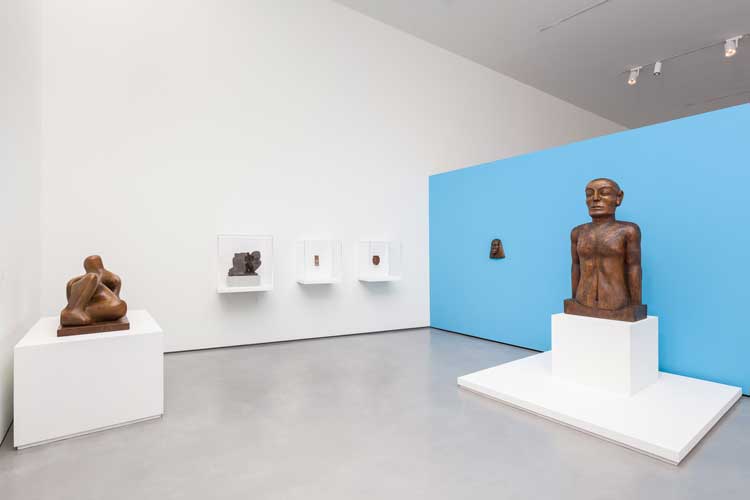
Ronald Moody: Sculpting Life, installation view, The Hepworth Wakefield, 2024. Photo: Mark Blower.
Moody’s early career was prolific (he made about 40 sculptures in bronze and wood between 1935 and 1941) and exhibitions in London, Paris, Amsterdam and the United States came thick and fast. Yet this exhibition at the Hepworth Wakefield does not try to rush things. Instead, it shows just 50 sculptures and paintings from across his entire career, beautifully paced, and shown alongside works by his peers, such as Epstein, Elisabeth Frink, Barbara Hepworth, Edna Manley and Henry Moore. Another aspect to this exhibition are the artefacts loaned from the British Museum, important touchstones for Moody as he developed his practice. The curator Ego Ahaiwe Sowinski, working alongside Eleanor Clayton, has really given the work room to breathe with gallery walls painted in bright cerulean blue and deep peach fuzz, colours that animate Moody’s sculpture, making oak, cedar, beech and elm fizz with life.
.jpg)
Ronald Moody, Johanaan, 1936.
Tate: Purchased 1992. © The
Ronald Moody Trust. Photo: ©
Tate.
Johanaan (1936), carved directly in elm wood and one of Moody’s largest sculptures, is a monumental work, bold at the time of its making as Moody brought Christian references in the title (it was named after John the Baptist) together with the stimulus of ancient art and spirituality from Egypt and India. The powerful impact of Johanaan, however, is not simply in its size. Size and scale shift significantly in Moody’s work and often much smaller works, such as L’Homme (1937-38) or Standing Male Figure (1951), have a greater presence than their size suggests.
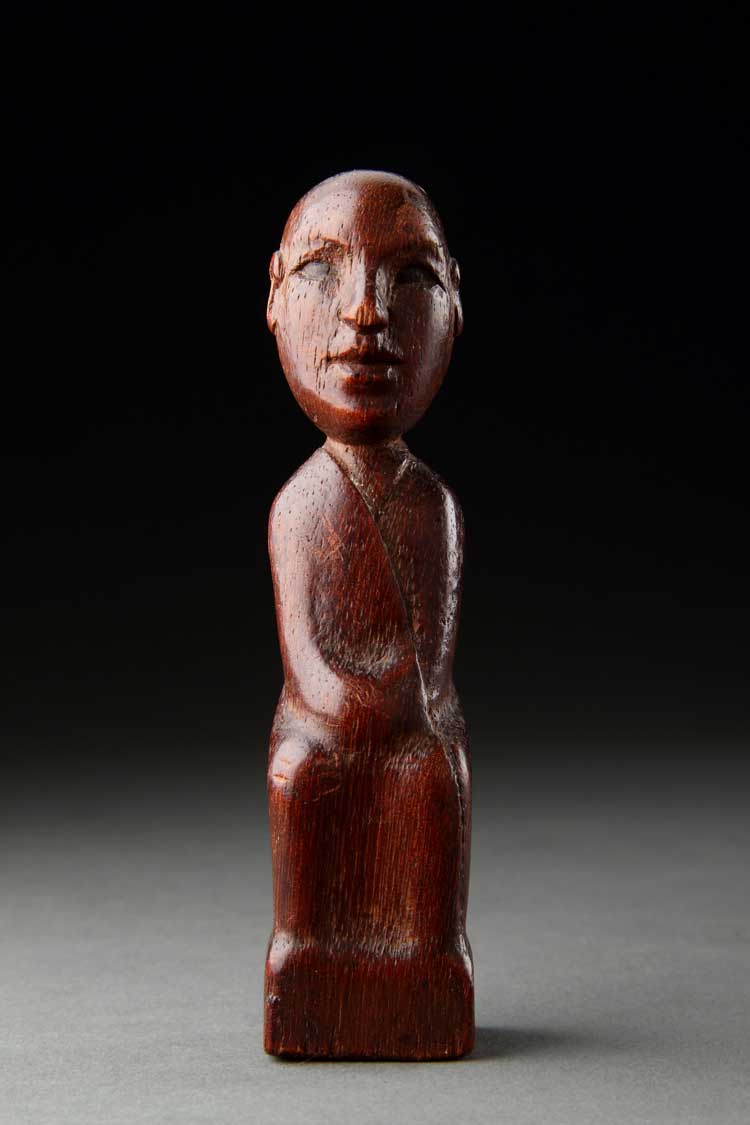
Ronald Moody, Marseille Figure,
1940. Tate: Presented by the
Ronald Moody Trust 2019. © The
Ronald Moody Trust. Photo: Philip Connor.
The tiny Marseille Figure (1940) is perhaps the limit case here and, despite its diminutive stature, is one of the most powerful pieces in the exhibition. Sowinski uses the Jamaican word tallawah, which means small but mighty, to explain this. Yet part of the attraction and impact of Marseille Figure is its story. Moody was living as a refugee in Marseille in 1940, and his health suffered and he contracted pleurisy. A scrap of fire-salvaged mahogany was given to him as a gift by fellow refugees. It was from this scrap of wood that he carved Marseille Figure, and, in a sense, it holds within it many of the relationships and experiences he had at that time, aspects of which are also revealed in the poems he wrote.
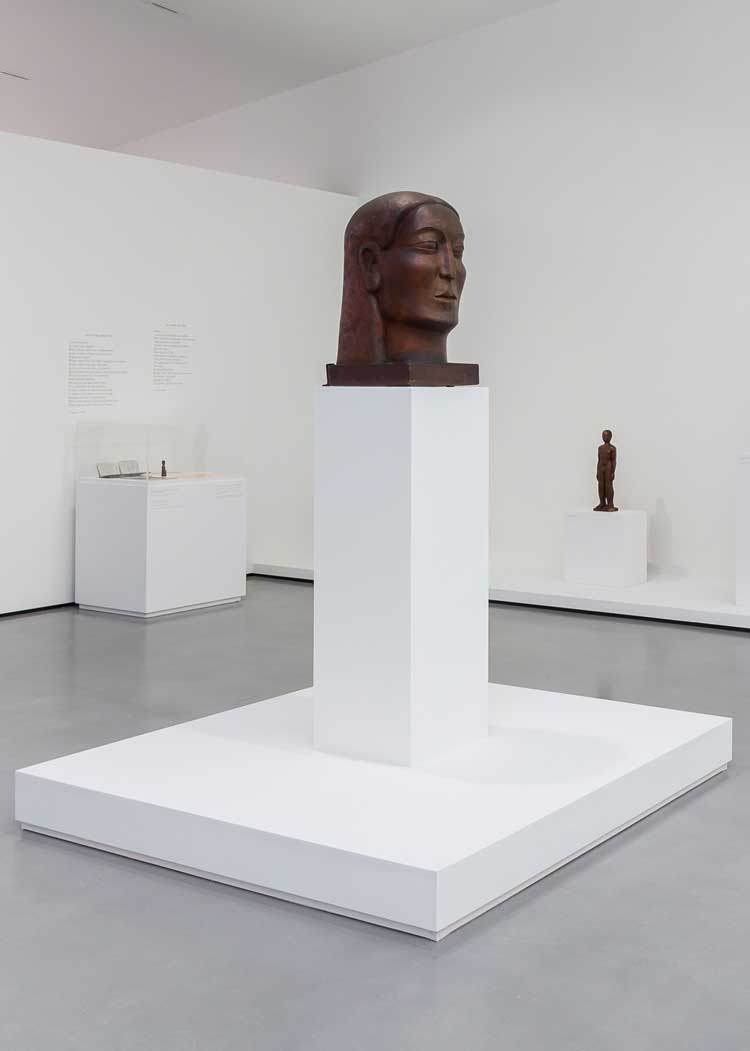
Ronald Moody. Midonz, 1937. Installation view, The Hepworth Wakefield, 2024. Photo: Mark Blower.
There are other voices in this exhibition, too, not least in the material experimentation that Moody undertook. In the postwar period, ill health and lack of wood found him working on a smaller scale, often portrait heads, and experimenting with new materials. Wartime experiences haunted him, and he struggled to comprehend what he understood as humankind’s propensity to self-annihilation. It is astonishing to see The Unknown Political Prisoner (1952), his entry to the international sculpture competition of that name organised by the Institute of Contemporary Arts in London in the early 1950s. Reg Butler won the grand prize in 1953, and Moody’s entry has not been shown for almost 60 years. It appears in this exhibition as a stark reminder, if it were needed, that war and conflict seem to continually accompany humankind, precisely the observation that found Moody despairing for the future. He said his work was an effort to create reminders of a critical situation, something that is painfully self-evident in the symbolism of three works – Technological Acrobatics (1972-73), The Eternal Circle (1970), and Crouched Figure (1958).
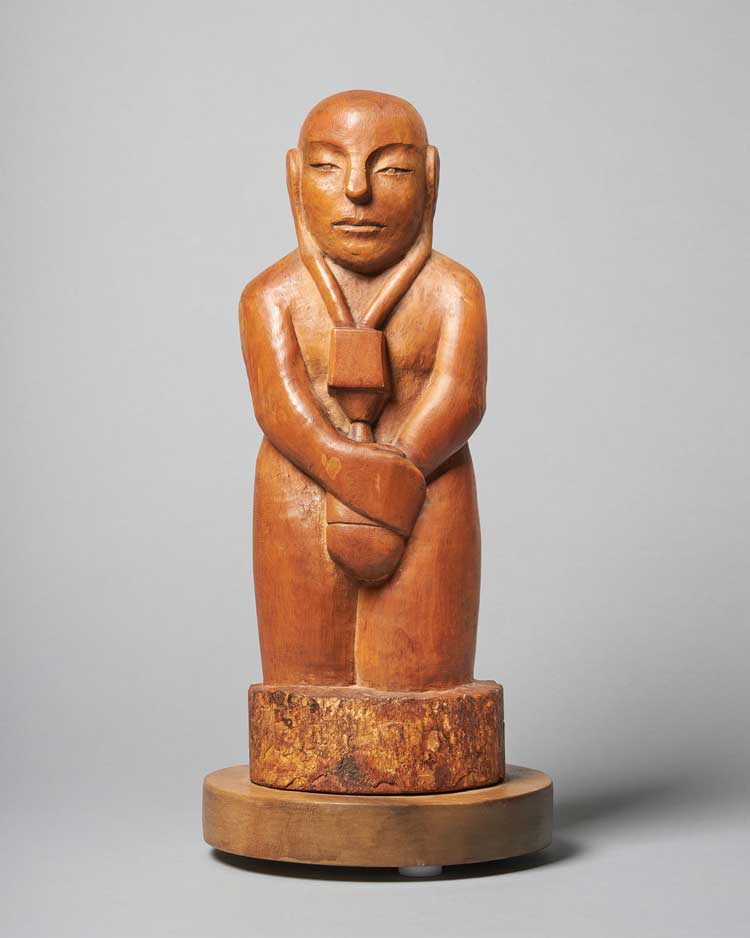
Ronald Moody, The Warrior, 1974. Pallant House Gallery. Purchased with support of Art Fund, V&A Purchase Grant Fund and Private Donors (2021). © The Ronald Moody Trust. Photo: Pallant House Gallery.
When Moody moved to Fleming Close Studio in west London in 1959, his neighbour was Frink. It was here that he completed his Concrete Family. Previously unpublished notes by Moody’s niece, Cynthia Moody, give a strong account of the work in Sowinski’s book on Moody that accompanies the exhibition. It is worth saying that the core of the book is Sowinski’s research, but it also includes an impressive range of other voices. That range of voices gives a rich and rounded picture of Moody, something that would not have been possible without Sowinski’s generosity in writing and research. Cynthia Moody writes of the grandeur of the human form, something that preoccupied the artist whose Concrete Family was eventually made up of The Mother, The Man, The Youth (all 1958) and Little Man (c1962). Perhaps it is their familial nature that lends the group such a sympathetic air. The medium and dates of the Concrete Family also suggest a modern family, perfectly at home in Britain’s new towns, and gesturing to a hopeful future – a concrete counterpoint to Moody’s postwar concerns.
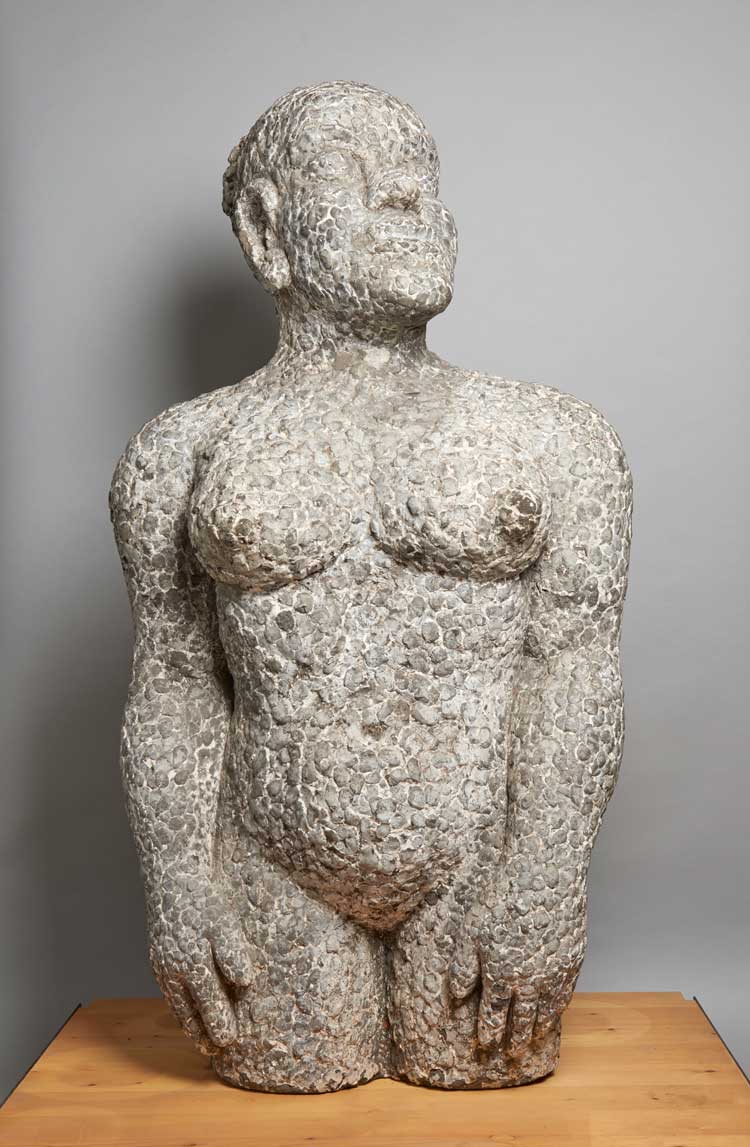
Ronald Moody, The Mother, 1958-59. Leicester Museums and Galleries. © The Ronald Moody Trust. Photo: Leicester Museums
and Galleries.
In the early 60s, Moody began to develop a new sculptural lexicon, drawn from Caribbean mythology and the deities of what he referred to as “Carib cosmology”. Birds provided a particular focus, with sculptures such as Savacou (1964) emerging from this strand of exploration. The Caribbean Artists’ Movement (CAM), founded in 1966, soon adopted the name Savacou as the title for its journal. At CAM, Moody found new inspiration alongside a wide range of artists including Paul Dash, Errol Lloyd, Althea McNish and Aubrey Williams, an experience that was sustained and sustaining until his death in 1984. It is entirely apposite that these artists and this significant period of Moody’s life, are present in this exhibition too. This cast of characters gives a glimpse of Moody’s wider commitments, politically and creatively. What is astonishing, is that it has taken until now for Moody to be brought to wider attention, something this retrospective and the accompanying book more than make up for.
• Ronald Moody: Sculpting Life, by Ego Ahaiwe Sowinski, is published by Thames and Hudson, price £30.